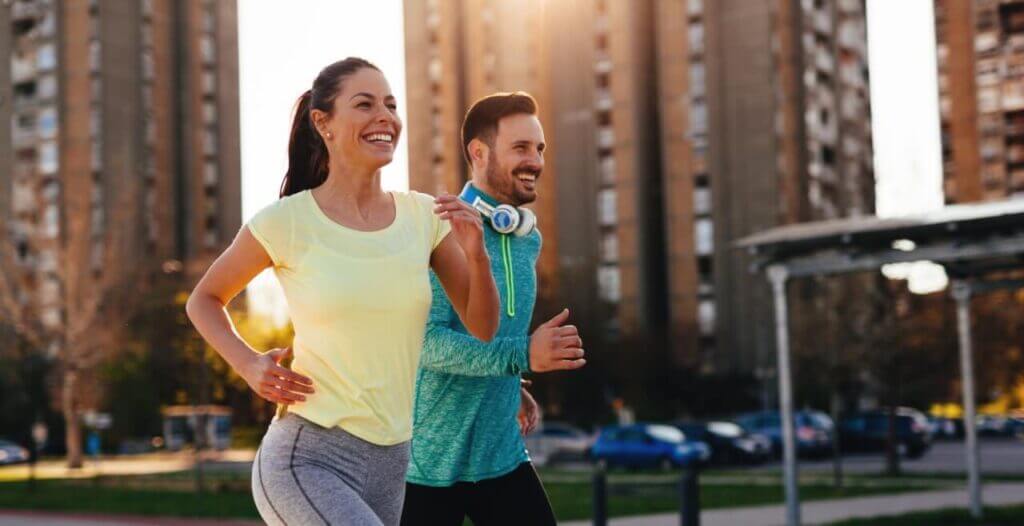You must maintain a high level of fitness if you are an athlete or someone who enjoys a lot of exercises. This necessitates relying on strong core muscles to stabilize our bodies and allow us to perform at our best. The squat is one of the most important exercises for core strength.
This appears to be a fairly standard and simple exercise, but athletes must improve their form in order to master it. In squats, this means keeping the hips at or below knee level, reducing forward lean, and getting the thighs as close to a horizontal position as possible. It’s debatable what happens to the feet during this exercise. Some people think the feet should be flat on the ground. Others believe the heel should be slightly elevated. Those who believe in elevating the heel often choose running or weightlifting shoes.
Read on to learn more about the effects of using weightlifting shoes while squatting!
The difference between running shoes and weightlifting shoes…
Running and weightlifting shoes are not the same thing. Weightlifting shoes appear to be the better option at first glance. Due to a wider base and differences in construction, such as a less flexible midsole, most weightlifting shoes provide lateral stability that running shoes do not.
Running shoes are also cushioned, absorbing energy as you exercise. When lifting weights, you want to redirect as much energy as possible vertically during the movement.
Don’t use your running or other athletic shoes for lifting purposes. The ideal lifting shoe should be hard with a raised heel, as this comes in handy with exercises such as squats and deadlifts. You don’t need as much arch support when weightlifting, either.
The benefit of wearing weight lifting during squatting exercises
When wearing weightlifting shoes, the differences in cushioning, shape, and construction produce a different result than when wearing other types of footwear. When wearing either type of shoe, scientific studies can show exactly what kinematic differences will appear.
A study conducted by three researchers at the University of Northern Colorado observed the differences when fit, college-aged males performed repetitions of squats at 60% of their maximum ability. The study participants randomly switched between running shoes and an unnamed brand of weightlifting shoes. The researchers observed the range of motion (ROM), trunk displacement and ankle flexibility.
The weightlifting shoes made a difference with ankle flexion, which was expected due to the lifted position of the heel in weightlifting shoes. This meant it was easier for the study participants to maintain proper squat form during the exercise. Their thighs and hips remained vertical and there was less leaning forward. The knees moved over the toes more easily, which also promoted better form and performance.
In addition, the weightlifting shoes caused less torso displacement than the running shoes. During the exercise, the athletes had a much lower forward lean and were able to redirect their energy upward. The researchers theorized that this was due to lower back stress being reduced.
Squats were also easier to perform in the weightlifting shoes than in the running shoes, according to the study participants. This could be due to the lower back stress being reduced, or it could be due to other factors such as the mental conditioning of being told they were wearing shoes designed for weightlifting rather than running.
Should I wear weightlifting shoes?
If you’re a runner, weightlifting shoes might not be for you, but if you spend a lot of time in the gym with barbells and the like, it’s probably a good idea to get a pair! If you’re just getting started, shoes with a lower heel lift may be even more beneficial so you can concentrate on proper form. Weightlifting shoes can help strength athletes or powerlifters maintain form during heavy lifting or competition.
Proper form when executing squats will help prevent injury. The study results suggest that the weightlifting shoes promote better form, and should then help prevent injury. Athletes at any level of experience can benefit from this aspect of wearing weightlifting shoes while performing squats.
If you aren’t quite sure what kind of shoes would be best for your level of physical activity, no problem. Contact our office today. One of our experts in physical therapy will be able to assess your form, ask questions about the kinds of sports or athletic activity you participate in, and make an educated suggestion about what type of footwear would be best suited to your needs!
Sources:
- https://www.ncbi.nlm.nih.gov/pubmed/22201687
- https://www.ellipticalreviews.com/blog/how-to-select-footwear-for-exercise/
Tags: weight lifting, physical therapy

